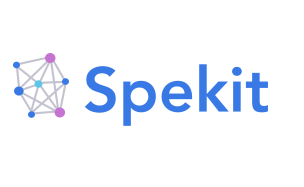ATD Blog
Three Ways Enablement Can Help Prevent Employee Burnout
Fri Jun 24 2022

With remote work on the rise and after-work happy hours on the decline, the biggest way to set yourself apart is through employee experience and engagement. Great employee experiences, especially in the form of ongoing training or onboarding, are critical to employee retention.
Enablement or L&D is a powerful tool for aiding and abetting a phenomenal employee experience. Below are some enablement-focused strategies to keep employees engaged.
Train With Multimedia
The idea of VARK—that training needs to cater to visual, auditory, reading, and kinesthetic learners—is dead. For example, it’s been proven that no one is solely a visual learner. According to Riener and Willingham, what really works is combining methods and mediums.
You can use this information to tailor your training methods. Get rid of extensive and long training sessions, and instead focus on microlearning. Make your training a combination of interactive, passive, and asynchronous. Use visual and auditory methods to drive home the ideas. Use a variety of mediums to help information stick. (More on learning styles here.)
Curate High-Value Content
Curating and filtering the important content for people helps them sift through the noise. This makes their information foraging easier—the idea that humans use the same foraging instincts as their ancestors to “hunt” for the information they need. Curating the most important information and providing it to them in the moments of need helps them focus and be more productive.
You can use this idea to inform the interface and usability of your training materials, webpages, and content. When these are optimized, the information scent will be stronger. The idea of information scent is that humans rely on clues (“scents”) within the information source to see if they’re going to find more value; when it seems tapped out, they’ll move on to the next source, article, or webpage.
In an ideal organization, you help employees use minimum brain power to find maximum value.
Space Your Initiatives
Nothing is more overwhelming than when everything seems to be happening at once. Spread out your initiatives so that the learning happens at necessary moments. Just-in-time learning is like looking at each step in a recipe when you need it; you’re able to comprehend the information within the context it’s useful. Spacing initiatives out means people are less overwhelmed per learning session and more able to digest the information they’re taking in.
One way you can space your learning is to break the content into chunks, also known as microlearning. Microlearning helps minimize the forgetting curve and adds to the feeling of empowerment, which correlates to the tip of the pyramid in Maslow’s Hierarchy of Needs: self-actualization. When employees feel empowered at their jobs, they’re more likely to avoid burnout.
This approach pairs well with hybrid learning. You can mix in person or Zoom meetings and asynchronous learning.
Conclusion
While it may seem overwhelming to rehaul your training or onboarding programs, the truth is that it doesn’t take much of a tweak to begin optimizing your content. Even a small shift, such as adding a video or interactive session, can help with knowledge retention and prevent burnout in new or tenured employees.
Plus, think of the benefits: the more information they have at their fingertips, the more time you’re focusing on initiatives, programs, and goals that matter to you!

